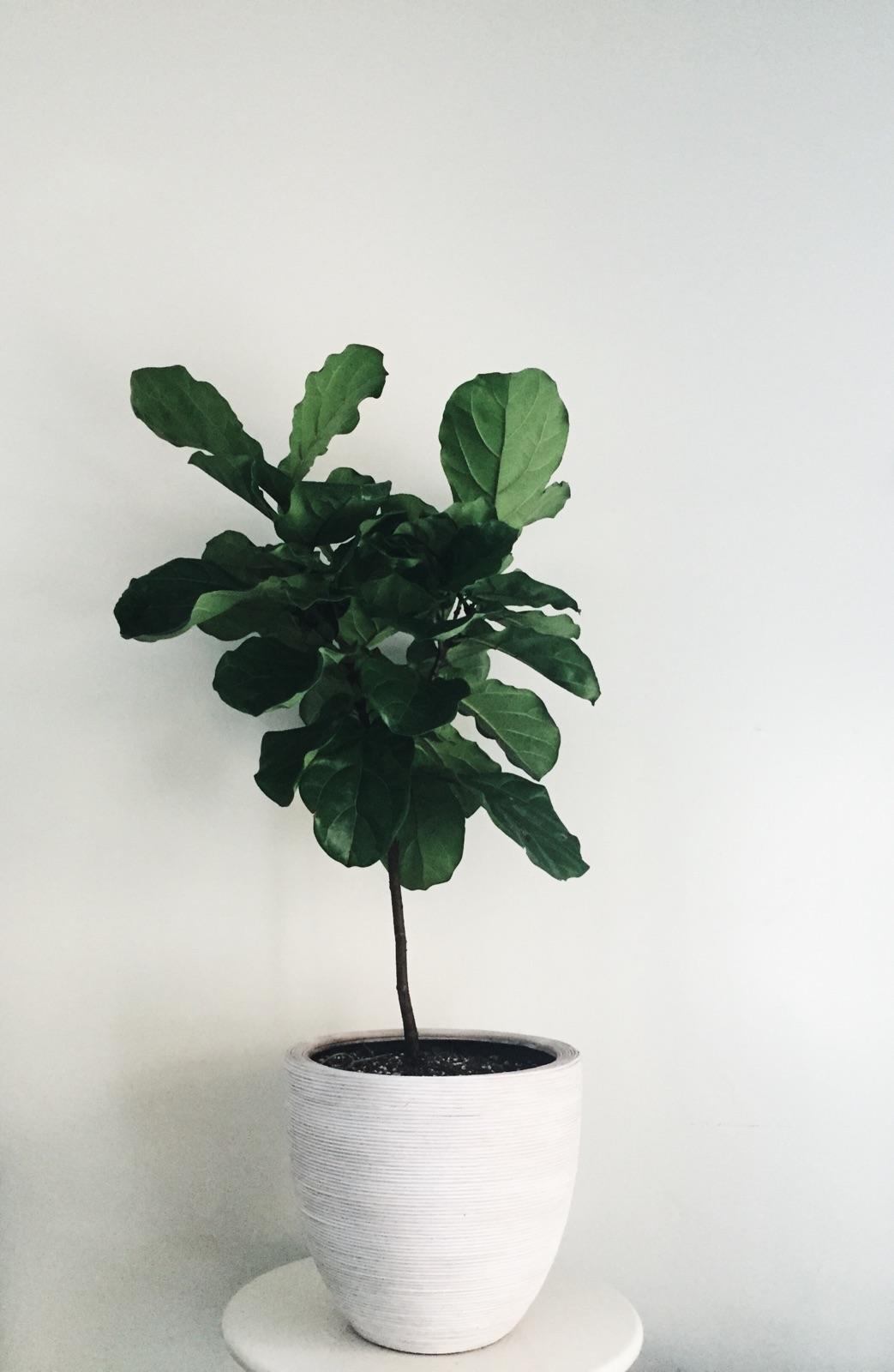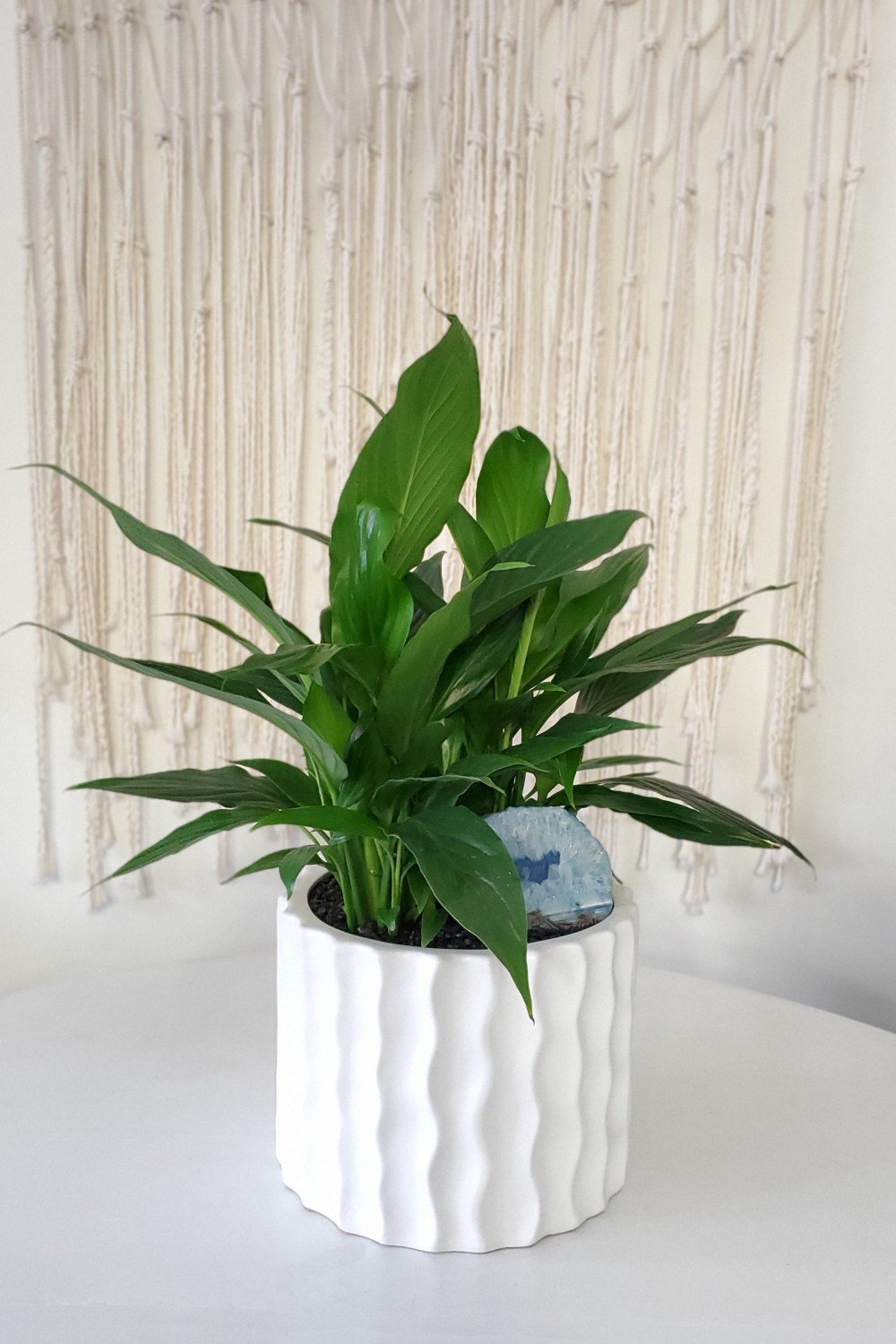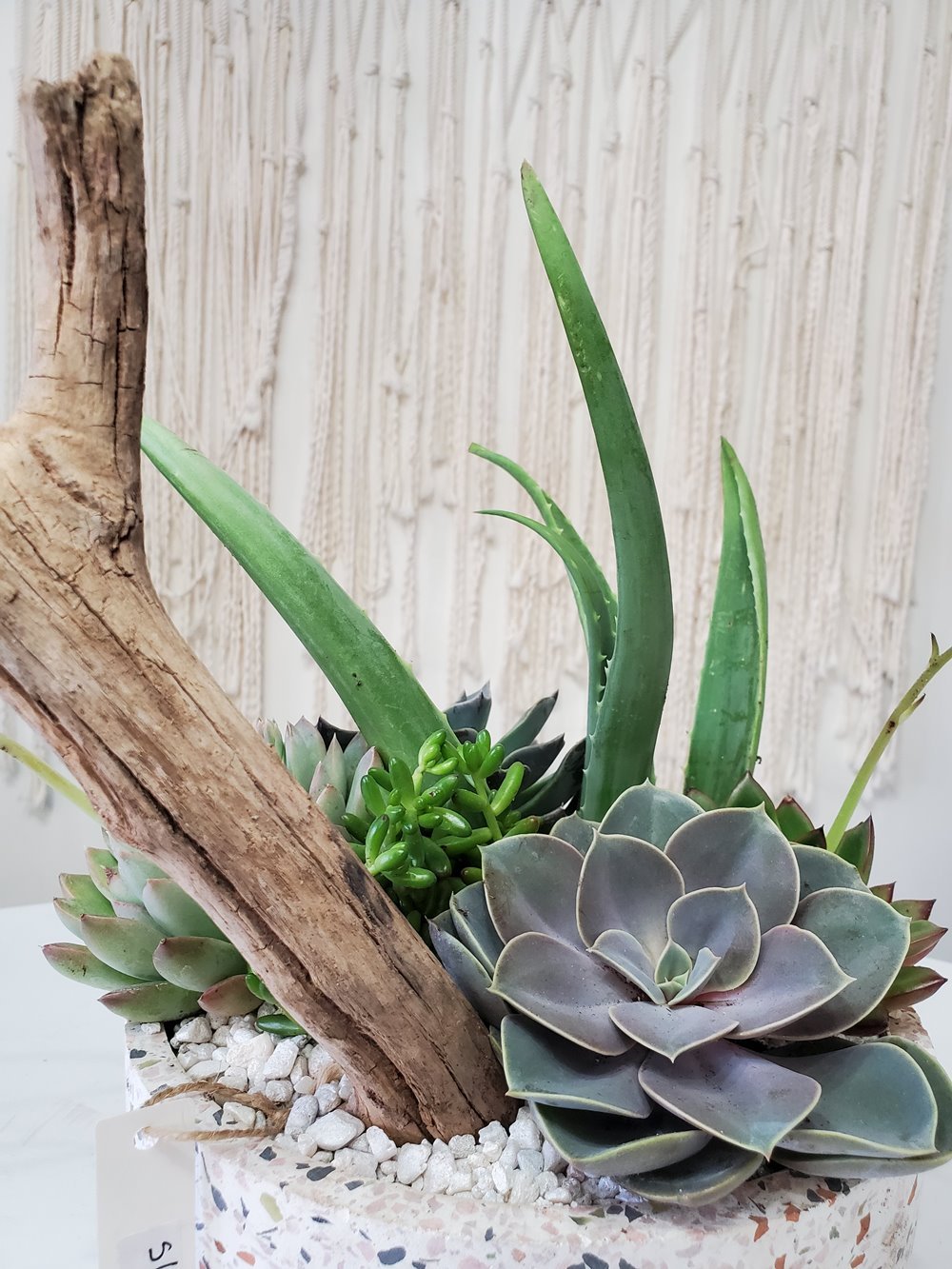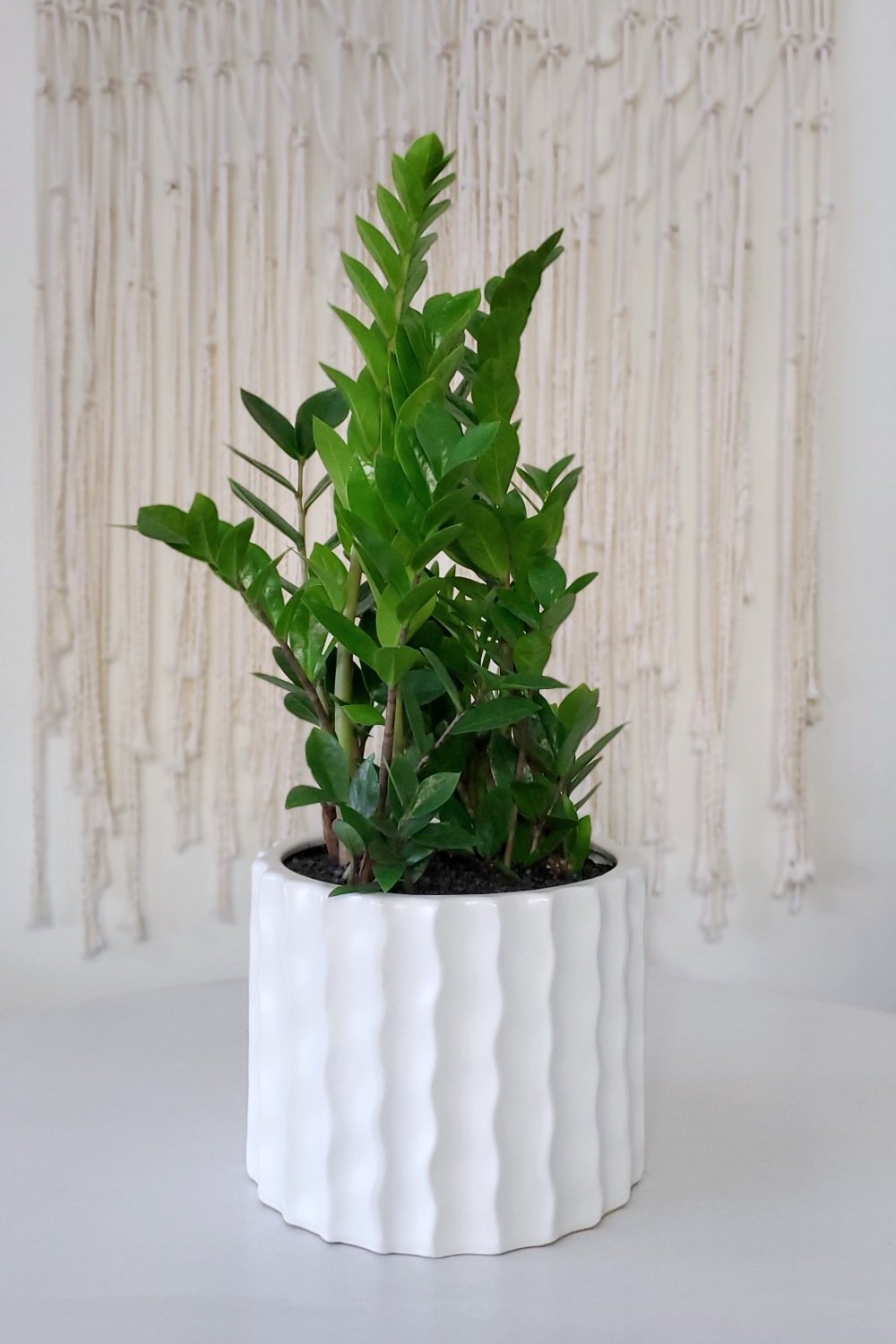plant care tips
we love designing beautiful potted plants and want them to continue to look their best after you get them home. here are some tips and tricks to help you care for your plants so they stay as beautiful as the day you got them.
birken philodendron
light: bright/medium indirect
water: let the top few inches of soil dry out between watering
SOIL: MOIST, BUT WELL DRAINING
humidity: appreciate extra humidity
other: prone to root rot from overwatering; yellowing leaves and wet soil can be a sign. if leaves begin reverting, you can prune the leaf off and see if new growth emerges variegated.
fiddle fig tree
Light: Give it bright consistent light, preferably by a sunny window. Turn the plant every few months once it begins to lean toward the light.
Drafts: Make sure that your window is properly sealed. Figs are used to the still, warm conditions of the rainforest. Cold drafts from windows, doors and air-conditioning units may cause its leaves to dry out and drop.
Soil: Rich, well-drained peaty soil. Plan on re-potting about once a year because once roots become crowded they will start growing through the container’s drainage hole, causing circulation problems and even root rot.
Water: Water only when soil is dry to the touch. Then water thoroughly (until the water drains into the saucer) and allow to dry out again. If plants don’t get enough water, new leaves will turn brown and drop; on the other hand, if they are overwatered, the oldest leaves (toward the base of the plant) will turn brown and fall off.
Fertilizer: Feed with a water-soluble plant food throughout the growing season according to directions.
Pests: Figs are vulnerable to aphids, mealy bugs, scale, mites and whiteflies, causing leaves to turn yellow and drop. Inspect the foliage regularly, and if signs of infestation occur, wipe down the leaves with a solution of ½ teaspoon dishwashing detergent and one gallon of water.
source: http://www.hgtv.com/outdoors/flowers-and-plants/houseplants/the-fiddle-leaf-fig-is-fashion-forward
jade
water liberally, then allow soil to dry out completely before watering again
do not let stand in water
jades like to be put in very bright sunlight with low humidity
avoid excessive hot and cold areas; keep away from drafts
set plant on a saucer or coaster to protect furniture from water damage
peace lily
keep soil moist; water thoroughly when soil is dry to touch, do not let stand in water
prefer bright diffused sunlight, do not expose to direct sunlight
avoid excessive hot and cold areas; keep away from drafts
set plant on a saucer or coaster to protect furniture from water damage
sansevieria
water occasionally when soil is very dry to touch, do not over water
can be grown in direct sunlight, shade or even artificial light
set plant on a sauce or coaster to protect furniture from water damage
succulents + cactus
water sparingly, then allow the soil (or rocks/sand) to dry out completely before watering again. do not let stand in water
succulents like to be put in very bright sunlight with low humidity (but be careful of full/direct sunlight from our southern utah sun, it will burn)
avoid excessive hot and cold areas, keep away from drafts
set plant on a saucer or coaster to protect furniture from water damage
tillandsia
aka: air plant, airplant, or tillys
tillandsias grow differently than most other house plants, they are really very hardy and require much less attention than other house plants.
protect them from frost
give them bright, filtered light
provided the atmosphere is not too dry (as in an air conditioned home) they can survive with water misting (weekly) and the occasional bath
if the air is very dry you will need to submerge the plant in water for 2-3 hours, then let dry completely upside down, about every 2 weeks
over watering will cause root-rot
fertlize by adding a pinch of bromeliad or orchid fertilizer to your mister
zz plant
zz plant care starts with a lack of care. in fact, zz plants will do better if you leave them alone.
much like cacti, they need less rather than more water. water the plant only when the soil has dried out. a zz turning yellow means it is getting too much water and may be rotting. zz plants can survive months without water, but will grow faster if watered somewhat regularly
zz plants are happy without fertilizer, but if you would like, you can give the plant half strength fertilizer one to two time a year, and only in the summer months








